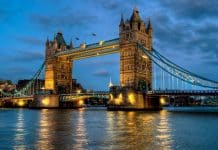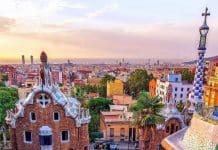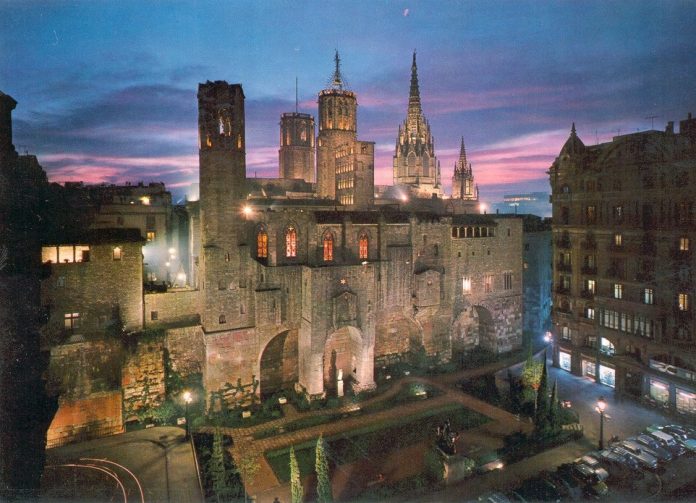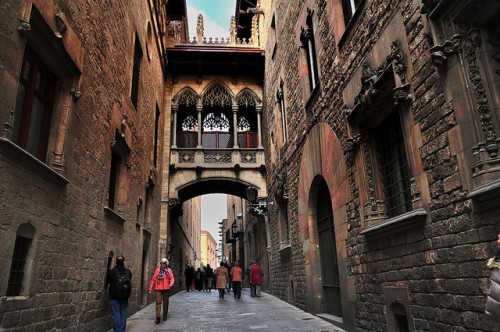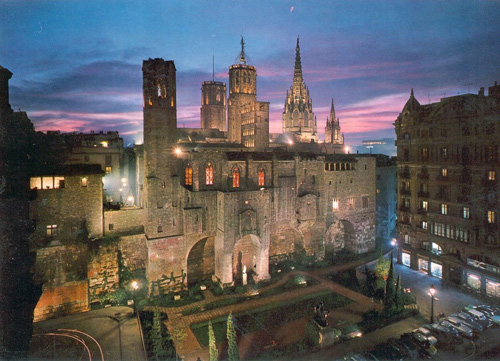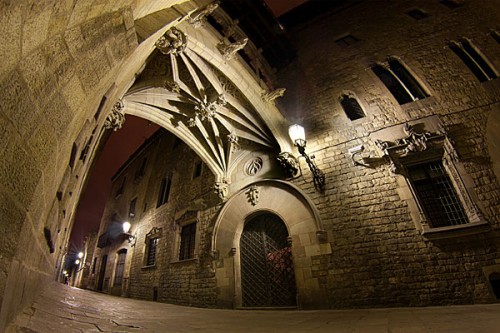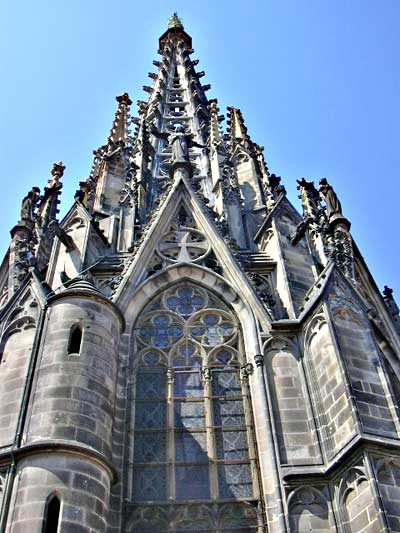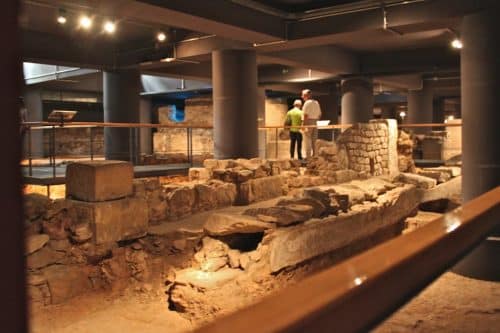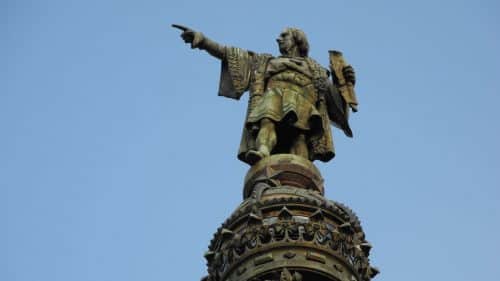Spain is known for its intricate and interesting gothic architecture. Perhaps one of the best places to view Roman and medieval landmarks is in the Gothic Quarter, called Barri Gotic in Spanish, located in the older part of Barcelona, Spain. This region can also be called El Gotic and is the center of where the old city of Barcelona was located in the past.
Where to Find Barri Gotic?
Barri Gotic is located in Ciutat Vella district and runs from La Rambla to Via Laietana, and from the Mediterranean seafront to the Ronda de Sant Pere. If you’re visiting Barcelona, this is a must-see. The quarter covers most of the older parts of the city.
This region has an intricate street plan that looks a lot like a labyrinth. There are many squares, with narrow streets leading to them.
This is an old part of the city that is mainly walkable. Cars aren’t allowed in here, though you can take a taxi in to get closer to your destination. It’s best to pick up a map of the streets surrounding all the older historical buildings so that you don’t get lost.
The History of Barri Gotic
Barri Gotic’s recordable history dates back to the Romans. They were the first to occupy and build modern structures, dating back 500 years in time. The city was founded around 133 BC. The Roman settlement was built near the Temple of Augustus, which is just north of Placa Sant Jaume.
During the 2nd century, the city has only about 3500 to 5000 inhabitants. By the 3rd century, the first Christians came to Barcino.
The city has undergone many invasions in the past. In 410 AD, the Visigoths captured the city. In 714 the city surrendered to the Moors. There was an early Christian cathedral in the city that turned into a mosque. The Moors stayed in the city for over 100 years, though there aren’t many remaining Moorish sites or artifacts left here.
By the 12th century, Barcelona became an extremely important shipyard on the Mediterranean. Drassanes was an important shipyard player of the time.
Textiles was one of the major industries in the city. Many families became rich and influential from these industries. Today, you can still see some of the old smoke stacks from some of the older buildings still standing.
Sadly, the walls of the city were torn down from 1854 to 1856.
Barcelona was also notable for hosting the Olympic Summer Games in 1992.
What to See in Barri Gotic
There is much to see in Barri Gotic. The Carrer del Bisbe is a narrow street with buildings connected by overhanging walkways. It may give people a dark and claustrophobic experience of the city. Even though the center of town dates back to the middle ages, many of the structures here date from different periods in time.
There are the remains of the old Roman wall here, and also several interesting medieval landmarks.
The older part of the city is interspersed with the newer parts, which were built from the 19th and 20th centuries. It was during this time that the city underwent a major restoration, turning it into a tourist attraction. This was done just in time for the 1929 International Exhibition. Restorations continued on the site into the 1960s.
There is also the El Call, an old medieval Jewish quarter, and the Sinagoga Major.
El Call the Jewish District
This is one of the best places to experience what Barri Goti has to offer the traveler. It’s located about center of the city, and begins at the northwestern corner of Placa Sant Jaume. El Call means “little street” or “alley”. There is also the Call Major where the synagogue is, and the Call Menor which is a little district near the Ramblas. Call Menor was built after the city walls were set up.
During the 13th century there were about 4000 Jews living in Barcelona, which comprised fifteen percent of the population of the city. Many people here were doctors, merchants, money lenders, scholars, and scientists, and also worked for the crown. There were many valuable trading contacts created between Spain and the Middle East and North Africa during this time. By 1424 the Jewish families had to leave Barcelona due to the persecution of the Jews, so trading contacts and knowledge were lost.
The synagogue Major is Spain’s oldest synagogue, and likely the oldest one in Europe. If you want to drop in for a visit, it’s open to tourists. You can also find many interesting little galleries and antique shops in the Jewish district.
Ramblas
This part of Barcelona exists on a 1.3 km road, but is mainly a pedestrian zone or promenade. It started out as a river bed. Many monasteries used to be in this region. It runs from Placa Catalunya, which is a major transport hub in the city, to the port. The monument of Columbus is perhaps the most visible of all the structures.
Here you’ll find an open-air stage for performances, and many artists selling their wares and florist stands. Today it is one of the most interesting and popular promenades for tourists that’s surrounded by many historical buildings.
Via Sepulcral Romana
The Via Sepulcral is an old Roman cemetery right in the heart of the city. It was mainly used from the 1st to the 3rd century. Strangely, during the time, funerals weren’t allowed to be held within the city walls. This necropolis was located outside of them, along a road.
Here is where both middle and upper class people and their slaves and freemen were laid to rest. There are about 85 grave sites with the remains of about 200 people located here. You won’t be able to see all parts of the site today, but there is one spot that is open to visitors.
Catedral La Seu of Barcelona
This is perhaps one of the most spectacular cathedrals in Barri Gotic. Construction on the cathedral began in the 11th century. It was built over another cathedral which was destroyed by the Moors. The nave of the church was completed from 1298 to 1448. You’ll be able to see this structure for miles, with its pointed towers. It’s about at the center of Barri Gotic, and borders Rambla.
The forecourt of the cathedral is often used for parties and events, so check in advance to see if anything interests you. Note that at 6:30 pm on Saturdays and Sundays, you can watch people perform the Sardana, the traditional circle dance of the Catalans.
Museu D’Historia de la Ciutat
No trip to see the historical buildings of Barcelona is complete without a trip to the museum. It’s located at the Old Port. Here is where you’ll learn about the history of Barcelona, and see some intact artifacts that have been found over the years. The building used to be a brick house which was used as a warehouse in the 19th to 20th centuries.
The museum encompasses three floors in the Palau Clarina Padelias. You’ll learn about the region from the Stone Age to modern times. After you’ve tired of your learning experience, you can head to the room of the building where there is a large terrace with a cafe. From the roof you can also see much of Port Vell.
Monument a Colom
The Monument a Colom is a statue of Christopher Columbus pointing his way to Mallora, the direction of his original departure to discover the new world. In his left hand, he holds a map of the route he’ll take. It’s located at the old port and stands over 60 meters high. Here you can travel up to a high viewing platform that offers stunning views of the city.
This statue was inaugurated in 1888 at the first World Exhibition. The statue was made from solid bronze and has the official name of “The Mirador de Colom”. It’s located at the southern end of the Rambla at the Portal de la Pau.
Placa Reial
If you want to get away from the hustle and bustle of Ramblas, but still want to view activity on streets surrounded by historical buildings, head to Placa Reial. This is only a short walk away from Ramblas. Here are many benches where you can sit and people watch, or have a closer look at the historical buildings. You can also enjoy a cup of tea or coffee, as there are several cafes near here.
Visit Barri Gotic Today
There’s a lot to interest the traveler at Barri Gotic, Barcelona’s main area for historical buildings. Be sure to spend at least a few days here, otherwise you’ll be disappointed that you missed out on the fine architecture and structures of the city.
And don’t forget a trip to one or two museums too, where you can learn more about the buildings and the artifacts that have been found on the sites of these older buildings. Book your trip to Barcelona today and start planning on having an exciting and unique travel adventure!
